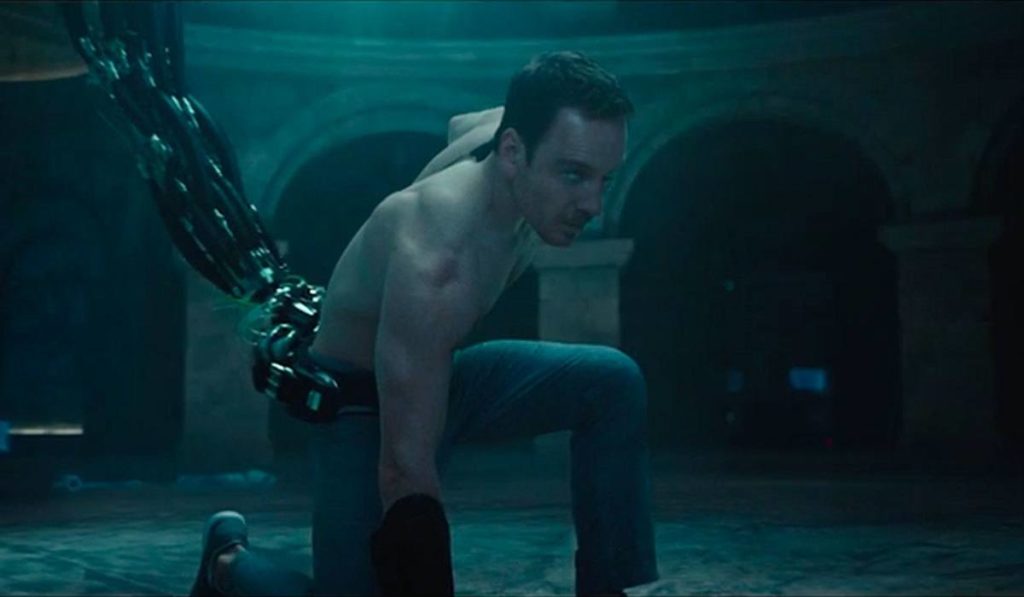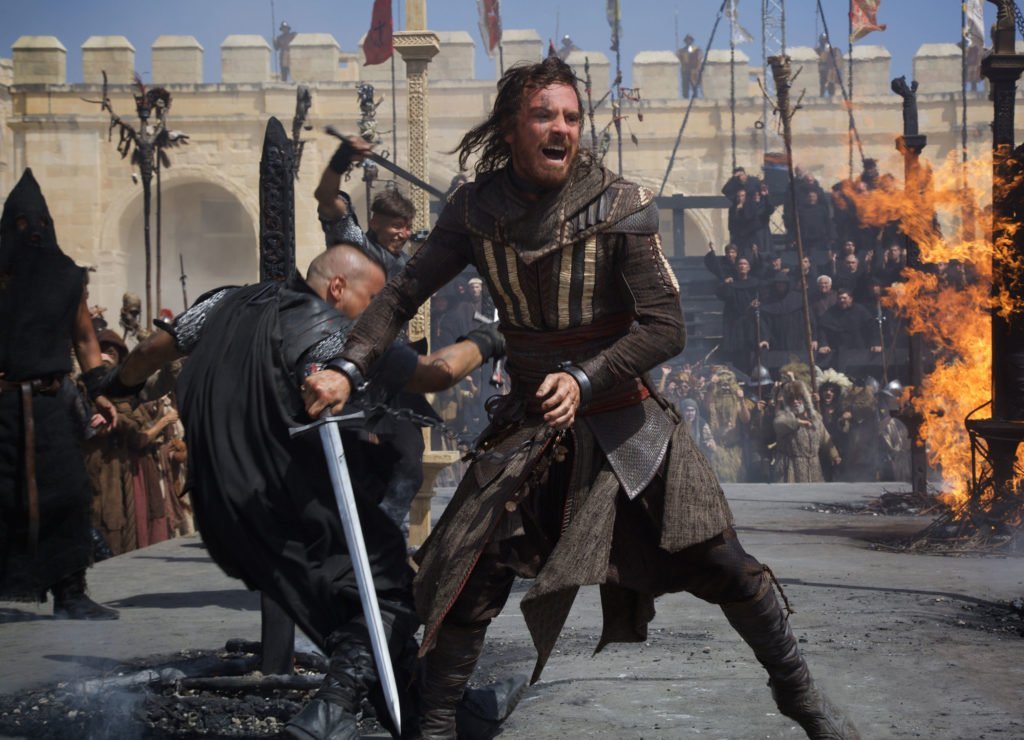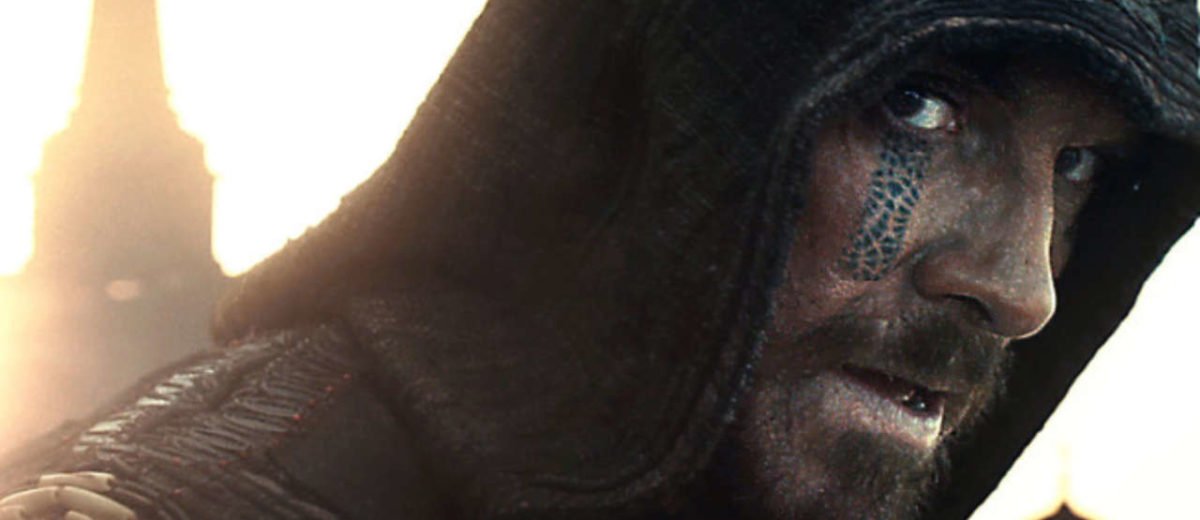The Assassin’s Creed movie is the latest attempt to adapt a video game into film. Unfotunately, as with most video game adaptations, it fails to live up to expectations and delivers a lackluster product, which is par for the course given Ubisoft’s most recent, less than stellar Assassin’s Creed games.
The movie stars Michael Fassbender (X-Men: First Class, Steve Jobs) as Callum Lynch, a man who is abducted by Abstergo to help the organization search for the ancient, all powerful Apple of Eden. Dr. Sophia Rikkin, played by Marion Cotillard (Big Fish, The Dark Knight Rises), believes that Abstergo wants to “cure violence” with the Apple, but both Lynch and Dr. Rikkin eventually discover that Abstergo’s plans are in fact much more sinister.
Assassin’s Creed is a very pretty movie. The parkour is impressive, and the fight choreography helps sell the assassins as almost-supernatural killing machines. Additionally, the cityscapes, while primarily CG, are reminiscent of the large sprawling cities players explore in the Assassin’s Creed games. And the genetic memory-accessing Animus is absolutely gorgeous. No longer a chair or metal bed, the Animus is now an animated mechanical arm that allows Lynch to move around the room while climbing holographic walls. At first glance, this new design might look like something a meddling producer would put in a movie simply because “it looks cool.” However, the new Animus actually explains how characters such as Lynch, who have no training in parkour or martial arts, end up with assassin-stlye fight skills all their own.

Despite being visually impressive, the Assassin’s Creed movie has numerous flaws. Some are narrative based, while others stem from the quality of acting and cinematography. First of all, the movie misrepresents the Bleeding Effect, a side-effect of using the Animus for extended periods of time. Most people who exhibit the Bleeding Effect suffer from hallucinations and have difficulty distinguishing their own memories from their ancestors’, occasionally forgetting who or where they are or what year it is. In Lynch, the Bleeding Effect manifests as a phantasmal version of his ancestor Aquila de Nerha that interacts with him. This portrayal is at odds with all other instances of Bleeding Effect hallucinations, as they are merely visions of past events. Lynch’s hallucinations have more in common with the recording of Minerva that speaks directly to the player in many of the games. However, this specific Bleeding Effect symptom could just be unique to Callum Lynch.
Additionally, the movie misrepresents various mechanics iconic to the Assassin’s Creed franchise, such as the Leap of Faith and synchronization. In the games, the leap of faith is a recurring activity that assassins use to strategically escape enemies. In the movie, however, the leap of faith is portrayed as a literal one that could easily have resulted in death had the plot demanded it. Furthermore, synchronization is supposed to reward players who complete various side-missions and flawlessly fight off enemies, but in the movie it is merely something that occurs because it happens in the game. The movie appropriates these mechanics with little to no understanding of how they work and takes them literally.
Most of the actors in the movie deliver acceptable performances. However, Marion Cotillard is devoid of any emotion, especially when she is supposed to be crying. While Cotillard’s portrayal of Dr. Rikkin is not wooden, it still comes across as forced.

Additionally, the Assassin’s Creed movie has pacing issues. Several action scenes and establishing shots last far too long, while not enough time is spent establishing the personalities or motivations of two of the main antagonists, Ojeda and Torquemada. In the Assassin’s Creed games, villains such as these are introduced in the beginning of the game and have more character development. Case in point, the villain of the first game is the leader of the Brotherhood of Assassins, Al Mualim. Players get to understand his ideas and philosophies as the game progresses. Near the end, Al Mualim is revealed to have worked with the enemies of the Assassins, the Templars, to retrieve the Apple of Eden. This reveal works because players got to know Al Mualim, or at least a person Al Mualim claimed to be. Ojeda and Torquemada have no such development and are simply tools to further the plot. So little screen time is spent on these characters that I had to search the Assassin’s Creed wiki to figure out they even had names.
However, the action scenes that take place in the past are the movie’s weakest links. These scenes are meant to be tense and could have worked as intended, as in most other movies, but the Assassin’s Creed movie forgets that they take place in the past. The movie ignores that Aquila de Nerha would have had to survive every fight and make every harrowing leap and jump in order for Lynch to be born and witness these events in the Animus. These action sequences might have worked in a more standard time-travel narrative. But sadly, the film never tackles and deals with the specific strictures of the source material in a clever way, the very nature of the Assassin’s Creed franchise sabotaging every fight and parkour scene that features Aquila.
The Assassin’s Creed movie, for all of its flash and production value, falls victim to the curse that has befallen many other video game movies. Capturing the games’ style, but little of their heart, it is difficult to recommend the film, even to fans of the Assassin’s Creed franchise.
- Stunning visuals
- Fun fight/parkour scenes
- Props and sets
- Bland story
- Lack of character depth
- Not very accurate to the games


